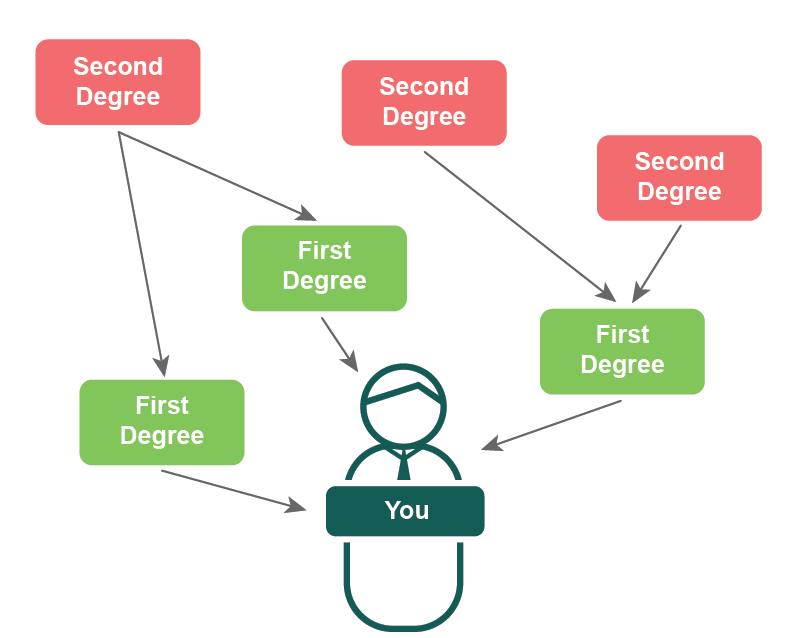To construct a citation network for yourself, build a list of all authors who cite papers by you. This can be done by hand or by using a service such as Web of Science or Mendeley. The authors on this list are your first-degree citations. These are the citations typically considered, at the paper level, when calculating numerical indicators of influence.
Repeat the process for your first-degree citations, building a list of authors who cite them. The authors listed here represent your second-degree citations. Typically, this is a much larger list.
Repeating this process finds increasingly distant authors and can provide context for how your own work compares with other works in terms of its potential reach.
Tightly connected groups in citation networks represent groups of authors who cite mostly within the group. This often corresponds to areas of study, but can also indicate citation rings, as shown in the Scholarly Kitchen article.
 Two examples of possible citation rings are shown here. The papers that might be falsely citing other papers are shown in pink. On the left, the pink papers all cite major paper B but not A. On the right, the pink papers cite one another, but probably should cite A and B.
Two examples of possible citation rings are shown here. The papers that might be falsely citing other papers are shown in pink. On the left, the pink papers all cite major paper B but not A. On the right, the pink papers cite one another, but probably should cite A and B.




